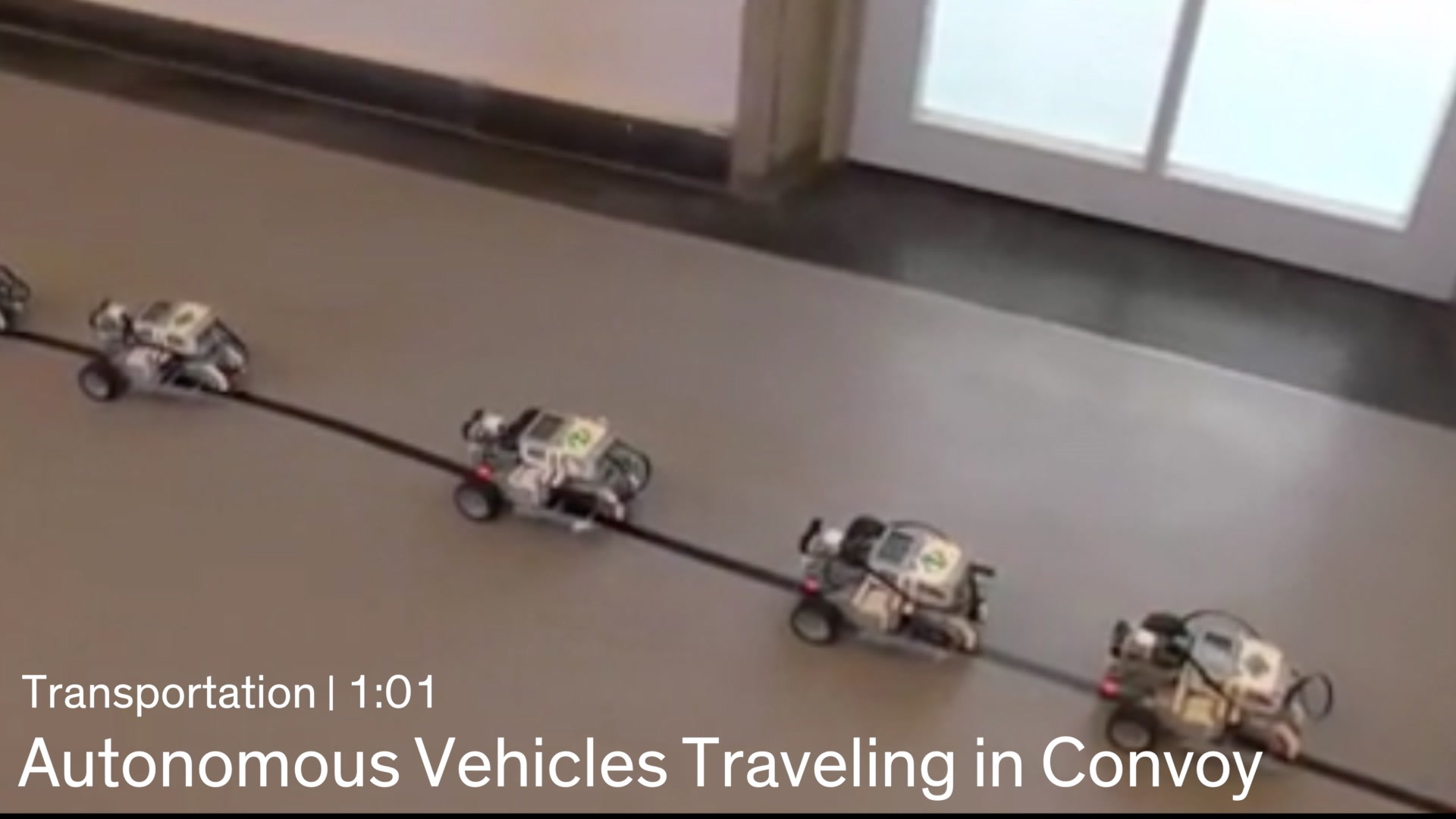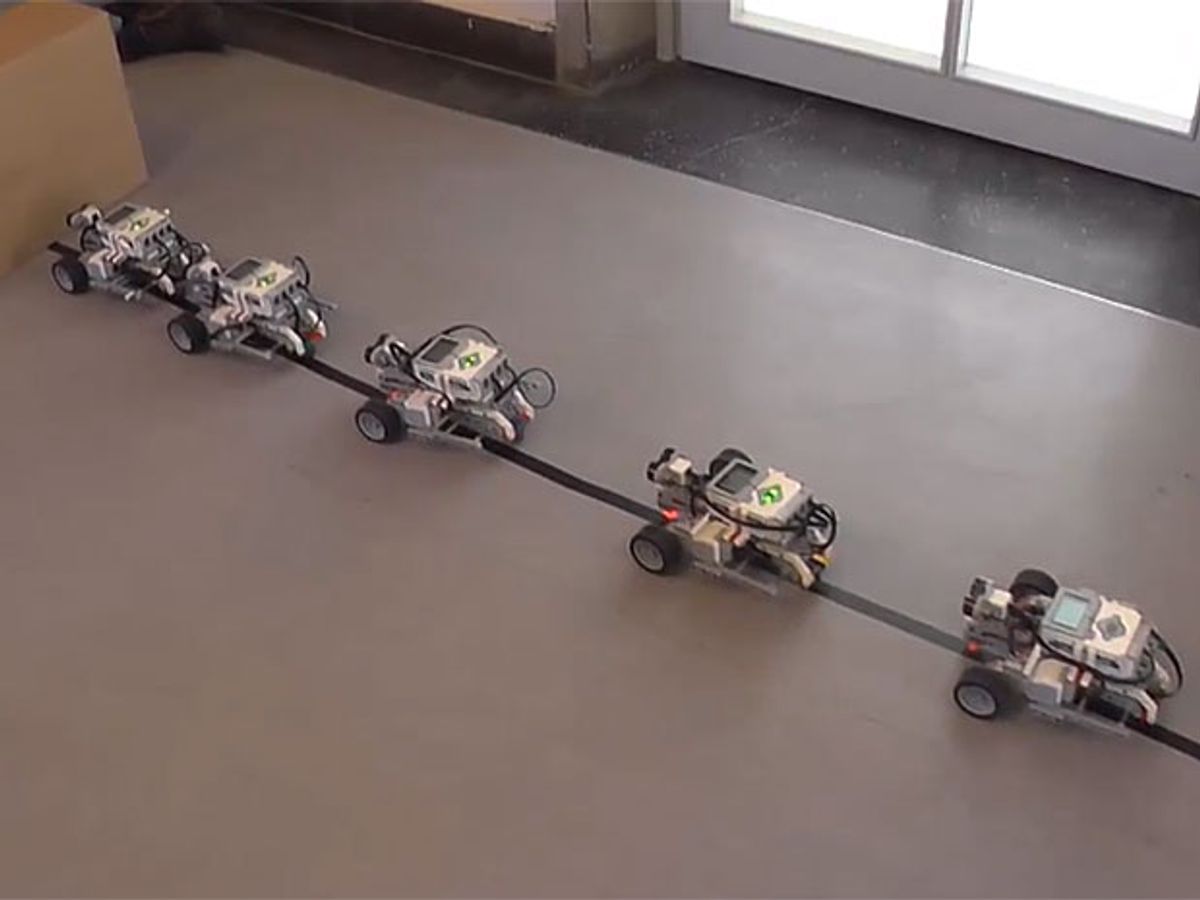Autonomous driving experts practically salivate over the vision of cars forming neat little convoys that travel at a constant speed down a highway. And for good reason: These synchronized fleets could reduce traffic fatalities, free up room on the road for additional vehicles, and help everyone get to their destinations faster.
The problem is that as a convoy grows in size, it invariably runs up against limits that hurt performance. Most notably, the number of messages that vehicles can successfully exchange tends to drop as more cars join. Every additional car requires the generation of more messages amongst the group until eventually, some of this digital traffic starts to collide.
Ignacio Llatser, a researcher at Technische Universität Dresden in Germany, is trying to find the sweet spot at which multiple cars traveling together can share key information without drowning each other out. In particular, he has conducted a series of simulated road tests to optimize the way vehicles exchange data when traveling in a convoy. He outlined his work on Tuesday at the IEEE International Conference on Communications in Kuala Lumpur, Malaysia.
First, his group set out to characterize the fundamental issue: that vehicle-to-vehicle messages are less likely to arrive at their intended destination as a convoy grows in size. To do this, the team used a vehicular simulator to test how successfully messages were transferred between cars as they traveled in convoys ranging from six to as many as 40 vehicles. They ran 10 simulations of 30 seconds each and measured how reliably messages were delivered in each configuration.
After the tests, the TU Dresden group found that a measure of reliability called the node coverage ratio dropped from nearly 100 percent when there were just six cars in the convoy to just below 85 percent in some cases when 40 cars traveled together.
Next, the researchers found that spacing messages out (in other words, lowering the frequency with which they are broadcast) in larger convoys could prevent this dip in reliability to some extent. In 40-car convoys, they discovered, it’s possible to keep the node coverage ratio from falling below 85 percent by broadcasting no more than one message every 200 milliseconds.
However, sending messages less frequently causes another problem. It increases data age, or the interval between the current time and the instant when the last received message was generated. As data age increases, it increases the likelihood that vehicles traveling at high speeds won’t receive critical information in time to make adjustments. Developers will need to carefully consider this tradeoff when designing autonomous cars for real life scenarios.
It’s still not clear to Llatser and his colleagues how exactly a 15 percent drop in reliability would affect autonomous driving in real life. Would it cause accidents or have no impact whatsoever? And they haven’t, to this point, worked out what are safe data ages for cars traveling at various speeds. But they are studying that question now.
The problem is an important one because convoys are quickly becoming the hot new research area for autonomous driving experts. In the past, many researchers have focused on a related issue: platooning. A platoon is a group of autonomous vehicles arranged in a single lane that follow a lead car; the lead car makes executive decisions about speed and direction.
Companies have already begun to discuss standards for how vehicles in a platoon will communicate with one another. In April, six platoons of self-driving trucks made headlines when they successfully completed road trips to Rotterdam, the Netherlands, from various points in Europe.

Unlike platoons, convoys operate across multiple lanes with no designated leader. Each car makes its own decisions. Llatser’s work represents one of the first close looks at the tradeoff in how messages are exchanged between vehicles when they are traveling together but aren’t arranged neatly, one behind the other.
The TU Dresden results are particularly timely because manfacturers have yet to agree on standards for convoys. This leaves open the possibility of adjusting message frequency in order to boost reliability or lower data age to suit different road scenarios.
But before they decide anything, experts will need more information.
Later this year, Llatser will participate in a project called AutoNet2030, where researchers will conduct the first demonstration project of a convoy on a closed circuit. That demo, which will take place in Sweden, will feature two cars and two trucks traveling together and executing maneuvers such as merging.



